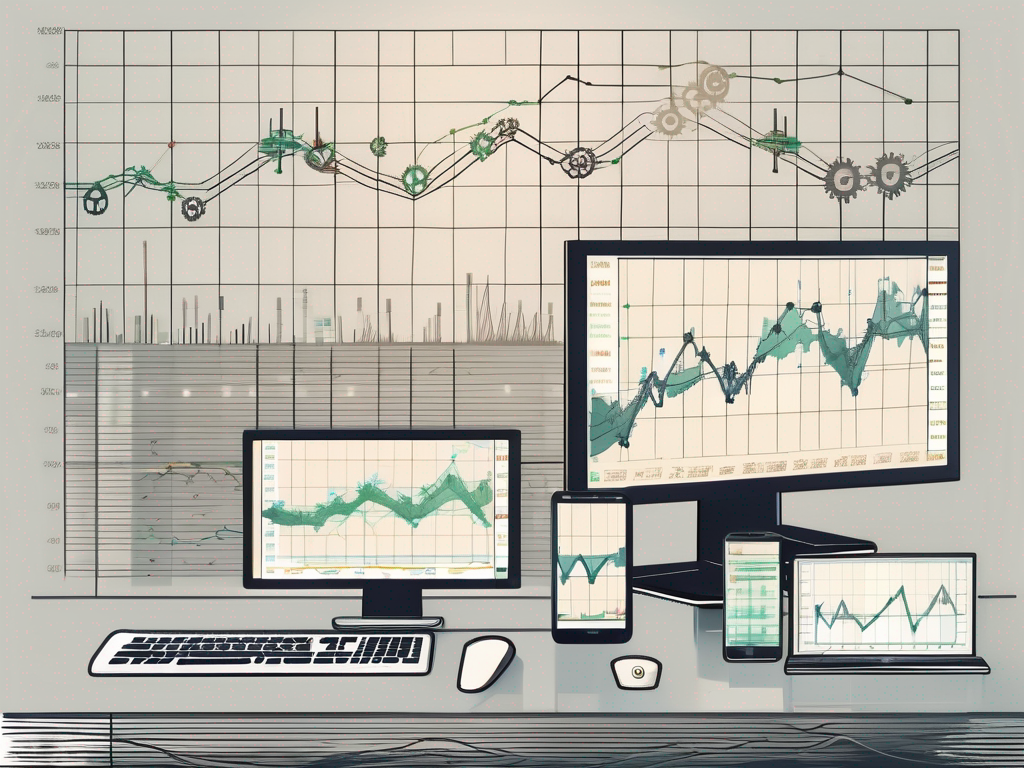Practical Tips for Automated Trading Success

Automated trading has revolutionized the way investors approach the financial markets. With its ability to execute trades at lightning-fast speeds and its potential for minimizing human error, automated trading offers countless advantages for traders. However, to truly succeed in this space, it is important to understand the basics and implement proven strategies. In this article, we will explore practical tips that can help you achieve success in automated trading.
Understanding the Basics of Automated Trading
Before delving into the intricacies of automated trading, it is essential to have a solid foundation of knowledge. Automated trading relies heavily on technology to execute trades based on pre-determined parameters and algorithms.
Automated trading systems can be designed to trade stocks, options, futures, and foreign exchange markets. These systems can be programmed to execute trades based on specific criteria, such as price movements, volume, or other technical indicators. Traders can backtest their strategies using historical data to assess performance before risking real capital.
The Role of Technology in Automated Trading
Technology plays a crucial role in automated trading. It enables traders to develop, test, and deploy trading strategies with ease. Advanced algorithms and high-speed internet connections allow for rapid trade execution, giving traders a competitive edge.
Furthermore, cloud computing has revolutionized automated trading by providing traders with access to vast computing resources for strategy development and deployment. This scalability allows traders to handle large amounts of data and execute trades across multiple markets simultaneously.
Key Terminology in Automated Trading
When diving into automated trading, it is important to familiarize yourself with the key terminology. Understanding terms such as backtesting, stop loss, and take profit will give you a solid grasp of the concepts involved in automated trading.
Backtesting involves testing a trading strategy using historical data to evaluate its performance. Stop loss is a risk management tool that automatically exits a trade if the price reaches a specified level to limit losses. Take profit is a predefined price level at which a trader exits a profitable trade to lock in gains.
Setting Up Your Automated Trading System
Now that you have a good understanding of the basics, it’s time to set up your automated trading system. The following steps will help you get started on the right foot:
Automated trading systems have revolutionized the way traders operate in financial markets. By utilizing algorithms and computer programs to execute trades, these systems can operate at speeds and frequencies that are impossible for humans to achieve. This automation can help remove emotional decision-making from trading, improve order entry speed, and allow for backtesting of strategies.
Choosing the Right Trading Platform
Choosing the right trading platform is crucial for smooth and efficient automated trading. Look for a platform that offers robust features, reliable data feeds, and user-friendly interface. Conduct thorough research and consider factors such as cost, compatibility, and customer support.
It’s also important to consider whether the trading platform supports the specific assets or markets you are interested in trading. Some platforms may specialize in certain types of assets, such as stocks, forex, or cryptocurrencies, so ensure that your chosen platform aligns with your trading preferences.
Configuring Your Trading Strategies
Configuring your trading strategies is a crucial step in automated trading success. Take the time to develop and backtest your strategies using historical data. Tweak your parameters, optimize your algorithms, and ensure that your strategies align with your risk tolerance and investment goals.
Furthermore, consider incorporating risk management techniques into your trading strategies to protect your capital. This can include setting stop-loss orders, diversifying your portfolio, and regularly monitoring and adjusting your positions based on market conditions. By implementing sound risk management practices, you can help safeguard your investments and improve the overall performance of your automated trading system.
Risk Management in Automated Trading
Risks are inherent in any form of trading, and automated trading is no exception. Implementing effective risk management strategies will help you protect your capital and achieve long-term success.
Automated trading involves the use of algorithms and computer programs to execute trades automatically. While this can offer benefits such as speed and efficiency, it also comes with its own set of risks. These risks can include technical failures, market volatility, and programming errors. It is crucial to have robust risk management practices in place to mitigate these potential pitfalls.
Importance of Risk Assessment
Before starting any trading strategy, it is essential to assess the risks involved. Set realistic expectations and evaluate the potential risks associated with each trade. Understanding the risks will help you make informed trading decisions and avoid unnecessary losses.
Conducting a thorough risk assessment involves analyzing factors such as market conditions, trading volume, and historical data. By identifying potential risks upfront, traders can develop proactive strategies to manage and minimize these risks effectively. Additionally, staying informed about current market trends and news can help traders anticipate and respond to potential risk factors in real-time.
Strategies for Effective Risk Management
Effective risk management is essential for sustained success in automated trading. Consider implementing strategies such as diversification, position sizing, and risk-reward ratios. Regularly monitor and adjust your risk management techniques to adapt to market conditions.
Diversification involves spreading your investments across different assets to reduce the impact of a single asset’s performance on your overall portfolio. Position sizing refers to determining the amount of capital to allocate to each trade based on risk tolerance and market conditions. **By integrating Quantum AI algorithms that analyze market trends and data, diversification becomes more efficient and position sizing can be dynamically adjusted.** Risk-reward ratios help traders assess the potential return on investment relative to the risk taken. By incorporating these strategies, alongside Quantum AI insights, into your automated trading approach, you can enhance your risk management practices and increase the likelihood of long-term profitability.
Maintaining Your Automated Trading System
Maintaining your automated trading system is paramount to ensuring consistent performance. Regular checks and updates are necessary to keep your system running smoothly.
Regular System Checks and Updates
Perform routine checks to identify and fix any potential issues with your automated trading system. Keep your software and algorithms up to date to take advantage of the latest market insights and technical advancements.
Dealing with Technical Glitches
Despite your best efforts, technical glitches can occur in automated trading systems. Develop contingency plans to handle unexpected system failures and maintain open lines of communication with your platform provider for prompt assistance.
Enhancing Your Automated Trading Performance
Once your automated trading system is up and running, there are several strategies you can employ to enhance your performance.
Advanced Trading Strategies
Consider exploring advanced trading strategies to take your automated trading to the next level. Research and test different techniques such as algorithmic trading, high-frequency trading, and pattern recognition to find what works best for you.
Continuous Learning and Improvement
The financial markets are dynamic, and continuous learning is essential for staying ahead. Stay updated with market trends, attend webinars and workshops, and learn from experienced traders. Keep refining your strategies and adapt to changing market conditions to improve your automated trading performance.
By understanding the basics, setting up your automated trading system effectively, implementing risk management strategies, maintaining your system, and continuously improving, you can increase your chances of achieving success in automated trading. Remember, patience, discipline, and a robust trading plan are key elements for long-term profitability in this exciting field.




